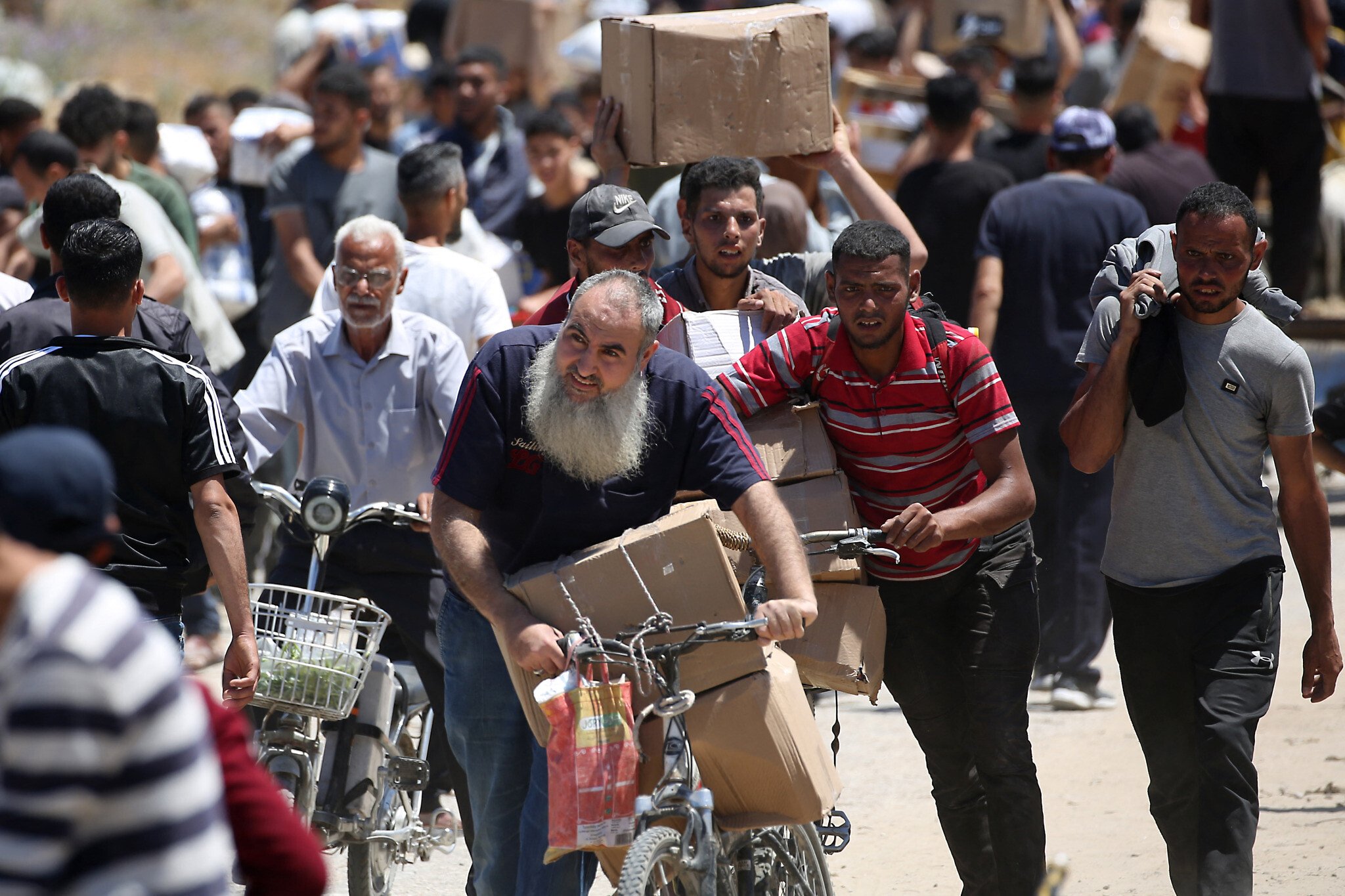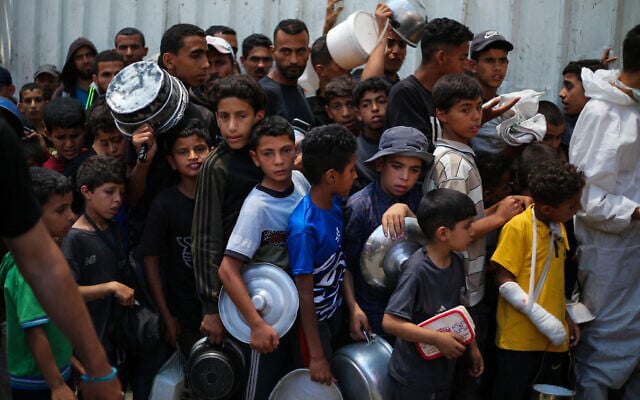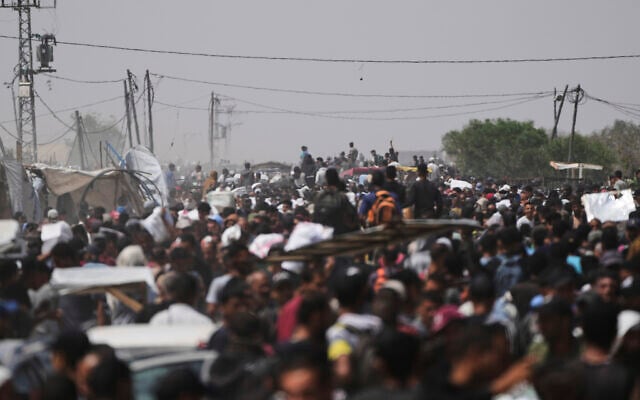



The Gaza Humanitarian Foundation said that it was unable to open its aid distribution centers in the Gaza Strip on Saturday due to threats from Hamas, marking the latest disruption to the aid group’s operations as it struggles to get off the ground.
The statement did not provide any further information on the terror group’s threats, but a GHF spokesperson said they were directed at the foundation’s drivers and at local Palestinian staff helping operate the distribution sites.
It marked the fourth time in the past week that GHF operations were disrupted, and the second time it kept its centers shuttered altogether, although previous work stoppages were due to overcrowding and mass casualty incidents — allegedly involving Israeli fire — rather than due to Hamas threats.
“Hamas is the reason hundreds of thousands of hungry Gazans were not fed today,” GHF said in its statement announcing Saturday’s closures.
“The group issued direct threats against GHF operations. These threats made it impossible to proceed today without putting innocent lives at risk,” it added.
It accused Hamas of being bent on aid operations returning to the UN-backed mechanisms that had been used previously, as it had been able to divert assistance from those in need through “manipulating the distribution processes.”
“These threats will not deter the Gaza Humanitarian Foundation from its mission to deliver food to Gazans who need it most,” it said, adding that it was adapting its operations to overcome such threats and resume aid distribution as soon as possible.
Since launching its operations late last month, GHF has opened three hubs in southern Gaza, of which only two have been functional in recent days, and not consistently.
The agency has faced heavy scrutiny from other aid bodies, as well as the UN and foreign countries, who say that it does not sufficiently address the humanitarian needs in the war-torn Palestinian enclave.
Critics have also accused GHF of putting aid seekers in harm’s way, with operations beset by deadly incidents, multiple days in a row.
The initial mass casualty event occurred last Sunday as hundreds of Gazans made their way to the Israeli and US-backed aid distribution compound in Rafah — the only one open that day, amid the partial easing of the more than two-month blockade on aid into the Strip.
Hamas-controlled health authorities in the war-torn enclave reported that 31 people had been killed and nearly 200 had been wounded in the pre-dawn shooting near the distribution center in Rafah, for which the IDF largely denied responsibility.
The death toll could not be verified, nor were the subsequent Hamas-issued tolls of three killed on Monday and 27 killed on Tuesday in similar incidents.
Israel and the US have promoted GHF’s new operations as a replacement for the long-established UN aid network in the Gaza Strip, arguing that it can effectively box Hamas out of the distribution process after the terror group managed to divert much of the aid that was coming in through the UN and international organizations — charges that those groups have denied.
While the UN has continued to distribute aid in the Strip while GHF finds its footing, it has complained that it has been unable to deliver much of its own humanitarian supplies due to IDF restrictions on movements and because roads that the military designates for its trucks to use are unsafe and vulnerable to looters.
GHF began operating in conjunction with a renewed Israeli offensive in Gaza almost 20 months after the war there was sparked by the Hamas onslaught of October 7, 2023, when thousands of terrorists invaded southern Israel to kill some 1,200 people and take 251 hostages. More than 50 of the hostages are still held, at least 20 of whom are believed to be alive.
According to Gaza’s Hamas-run health ministry, more than 54,000 people in the Strip have been killed or are presumed dead in the fighting so far. The toll cannot be verified and does not differentiate between civilians and fighters.
Israel has said it seeks to minimize civilian fatalities and stresses that Hamas uses Gaza’s civilians as human shields, fighting from civilian areas including homes, hospitals, schools, and mosques.
Israel’s toll in the ground offensive against Hamas in Gaza and in military operations along the border with the Strip stands at 429.


